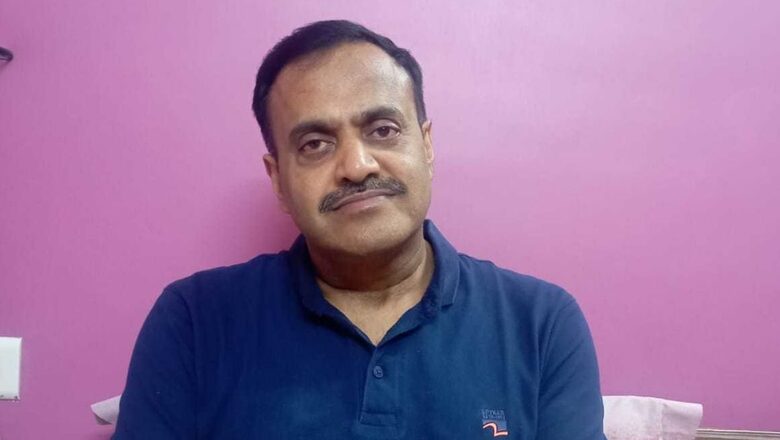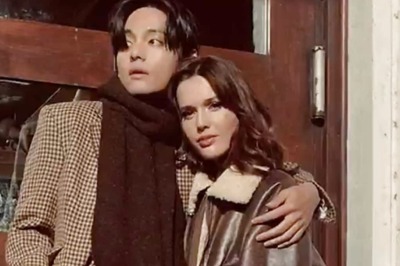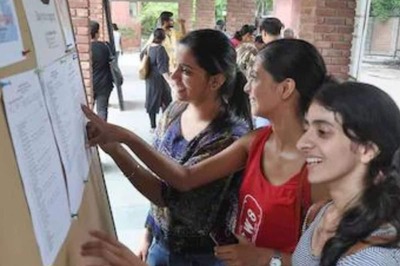
views
There is that classic line in director Hrishikesh Mukherjee’s timeless masterpiece Anand, in which Rajesh Khanna’s character says, ‘Babu moshai zindagi badi honi chahiye, lambi nahin‘. It was among everyone’s favourite dialogues in the 1960s, and the two karsevaks – Ram Kothari and Sharad Kothari – from Kolkata were no exceptions.
“But, what I never knew was the fact that they would live every word of it,” said Rajesh Agarwal, the person who accompanied the two brothers to Ayodhya. They were killed in the 1990 firing incident in the temple town, where the Ram Lalla idol’s pran pratishtha will take place on January 22.
With just one day left for the ceremony, Agarwal told News18 that the grand event shows that the selfless contribution of the Kothari brothers – who later became the face of the Ram Janmabhoomi movement – did not go in vain. Besides, Agarwal, who is a Ram bhakt at heart and a childhood friend of the Kotharis, recollected the firing incident and called it a “sheer massacre” of Ram bhakts and an attempt to crush them.
Agarwal said there were two things common between him and the Kotharis. One was Ram bhakti and the other was that they all belonged to Kolkata’s Bara Bazar locality, inhabited by Marwari migrants from Rajasthan.
“Having been born and brought up in a religious family, our inclination towards religion and national issues was more. We were also part of the local RSS shakha, where we not only used to focus on keeping ourselves fit but also took part in the discussions on other religious issues of the country. And the Ayodhya Ram temple movement was one,” Agarwal said.
Journey to Ayodhya
Agarwal further said things were usually fine until 1990 when the Ram temple movement reached its peak and the Vishva Hindu Parishad (VHP), Shiv Sena and RSS began camping at the Ram Janmabhoomi site, demanding reconstruction of the temple.
“At the same time, senior BJP leader LK Advani began the rath yatra and other right wing organisations gave a call to reach Ayodhya. However, in retaliation, the then Uttar Pradesh chief minister Mulayam Singh Yadav issued strict instructions stating that ‘no bird would be able to fly in Ayodhya’. The CM’s statement moved us all and we all decided to head towards Ayodhya. This is how our journey began,” he said.
Taking the UP government’s statement as a challenge, Agarwal and the Kothari brothers along with 85 others from the local RSS shakha began their journey to Ayodhya. “With some pairs of clothes and some food packed in a tin box, we left for Ayodhya on October 22, 1990. We boarded a train to Mughalsarai (now renamed Pandit Deen Dayal Upadhyay Junction),” he said.
But, on reaching Mughalsarai, the trio were faced with a peculiar situation as all the trains headed towards Ayodhya were cancelled due to security reasons. “We somehow managed to board a private bus, which took us till Lalganj and, from there, we were told we would have to walk to Ayodhya, which was still 149 km away, since no other transport was available,” he added.
‘Walked 149 days on foot to reach Ayodhya’
After spending a night in Lalganj, the group left for Ayodhya on foot, Agarwal said. “Before leaving for Ayodhya, we were told that we had to leave our luggage behind and split into small groups in order to dodge security personnel. It took us almost seven days to reach Ayodhya on foot,” he said.
He said though he knew the Kothari brothers since childhood, the journey from Kolkata to Ayodhya showed him a different side of them to him. “I had never seen this side of Ram and Sharad. They were so enthusiastic, passionate, helpful, courteous and polite at the same time, despite all odds. The time spent with them during the entire journey was some of the most memorable of my life. After reaching Ayodhya, the three of us formed one group and began our way to the Ram Janmabhoomi,” he added.
But then came a moment that made him realise that destiny has something else in store for Ram and Sharad, and they were there for a cause. “While we three were heading towards the Ram Janmabhoomi site, the duo stopped at a tailor’s shop. Out of curiosity, I approached them and enquired what they were doing. And to my surprise, they were requesting the tailor to quickly stitch them a saffron headscarf and embroider ‘kafan’ on it. That very moment I realised they are here for a cause,” Agarwal said.
On October 30, 1990, on the call of the VHP, RSS and Shiv Sena, a good majority of karsevaks reached Ayodhya. During the confrontation, UP police opened fire on them.
When a peaceful sabha turned violent
The following day, a sabha was held where the karsevaks were briefed on the plan for November 2, which coincided with Kartik Purnima. “We were to chant Ram naam and march towards the Janmabhoomi. If we were stopped, we were to sit down right there and begin singing Ram bhajans,” he said.
In retaliation, the police opened fire for the second time within 72 hours, resulting in the death of many karsevaks including Ram and Sharad Kothari.
On January 22, when the pran pratishtha takes place in Ayodhya, Agarwal has planned a grand function in Kolkata to pay a tribute to the Kothari brothers and also to celebrate Ram’s “homecoming”. It’s been 33 years since but the incident is still fresh in Agarwal’s memory. He is yet to recuperate from the horrors of the 1990 firing incident.
“Indeed, zindagi badi honi chahiye, lambi nahin and the Kothari brothers’ sacrifice has proved it,” he added.




















Comments
0 comment